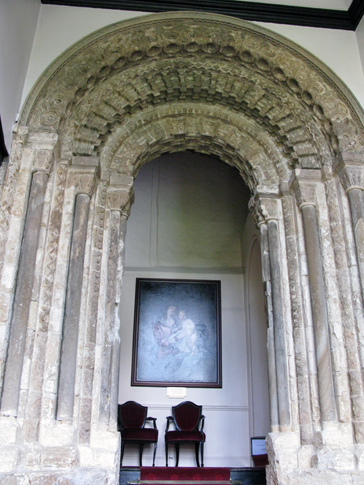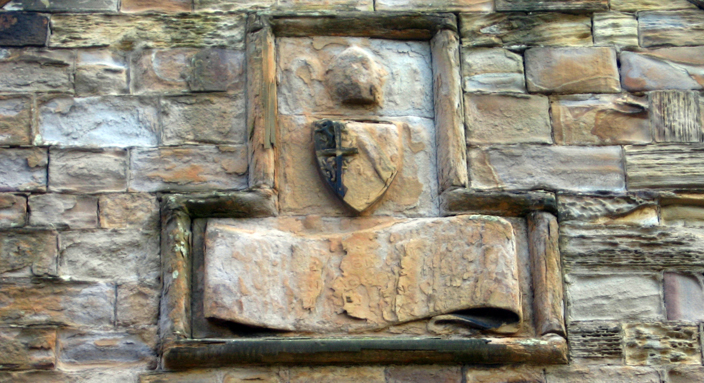
This entranceway, today an internal doorway leading to a vestibule, would have originally been one of the Castle's two main entrances, and would have led into a large hall. Its good state of preservation suggests that it was always roofed. Otherwise, the strong Durham wind would have caused severe stone erosion, as can be observed in areas of the Castle that have always been exposed.
© Jeffrey Veitch
This exterior doorway, constructed by Bishop Hugh Le Puiset in the late 12th century, is remarkably well preserved, unlike most of the Castle stonework – why?
The crispness of the carving on the entrance arch indicates that it would originally have covered, probably by a canopy. Had it been exposed to the elements, more damage would have occurred to the stone.
The entranceway was incorporated into Bishop Tunstall’s Gallery in the sixteenth century, and plastered over until the nineteenth century, when the carving was rediscovered and re-exposed – this also helped preserve it.
Compare it to the image below, of the Owengate Almshouse, constructed in the 1830s, six hundred years after the entranceway, to see the difference between stone that has been exposed to the elements, and stone that has been sheltered. The entranceway is probably built of better-quality stone as well.

The stone erosion on this almshouse on Palace Green gives the impression that the building is much older than it really is. This is a nineteenth-century building constructed of soft local stone, and unfortunately located in a wind tunnel. The effects on the stone carving have been disastrous.

